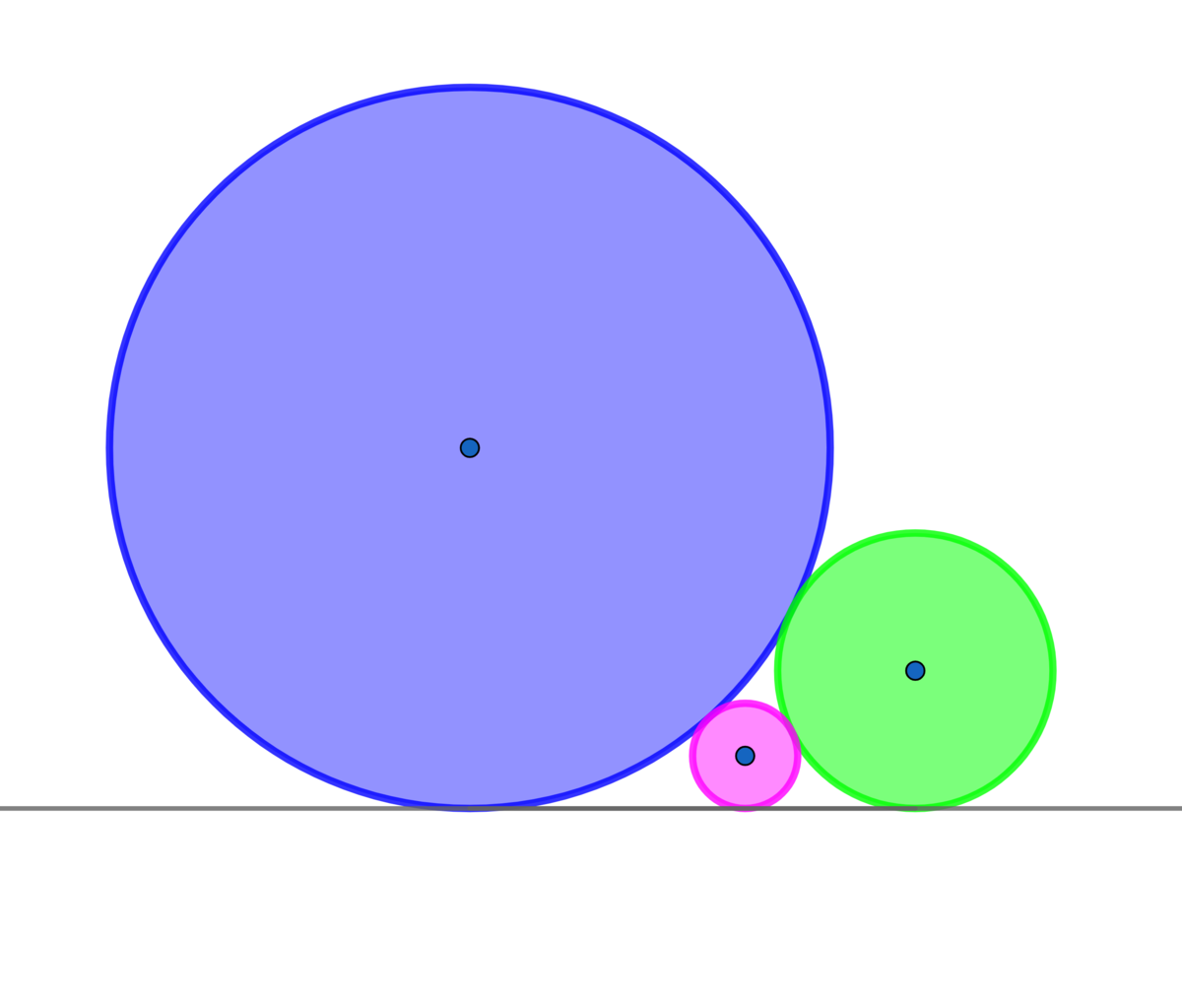It's All Circles!

All three circles above are tangent to each other and tangent to the horizontal line.
If the radius of the blue circle is and the radius of the green circle is , where ,
and the radius of the pink circle is and ,
where and are coprime positive integers, find .
The answer is 10.
This section requires Javascript.
You are seeing this because something didn't load right. We suggest you, (a) try
refreshing the page, (b) enabling javascript if it is disabled on your browser and,
finally, (c)
loading the
non-javascript version of this page
. We're sorry about the hassle.
Using the diagram above:
l 2 = ( R 1 + x ) 2 − ( R 1 − x ) 2 = 4 R 1 x ⟹ l = 2 R 1 x
m 2 = ( R 2 + x ) 2 − ( R 2 − x ) 2 = 4 R 2 x ⟹ m = 2 R 2 x
p 2 = ( R 1 + R 2 ) 2 − ( R 1 − R 2 ) 2 ⟹ p = 2 R 1 R 2
p = l + m ⟹
R 1 R 2 = ( R 1 + R 2 ) x ⟹
x = ( R 1 + R 2 ) 2 R 1 R 2 = ( R 1 − R 2 ) 2 ⟹ R 1 R 2 = ( R 1 − R 2 ) 2 = R 1 2 − 2 R 2 R 1 + R 2 2
⟹ R 1 2 − 3 R 2 R 1 + R 2 2 = 0 ⟹ R 1 = ( 2 3 ± 5 ) R 2
R 1 > R 2 ∴ we drop R 1 = ( 2 3 − 5 ) R 2 ⟹
R 2 R 1 = 2 3 + 5 = c a + b ⟹ a + b + c = 1 0 .
Note: R 2 R 1 = 2 3 + 5 = 1 + ϕ = ϕ 2 , where ϕ is the golden ratio.